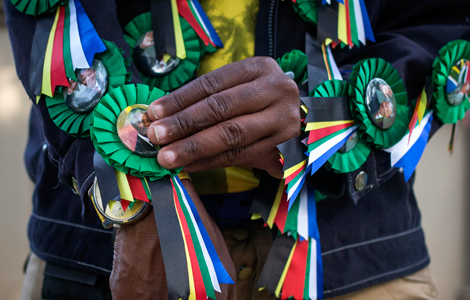Not really secret, but very effective
Updated: 2013-12-09 08:59
By Wu Wencong (China Daily)
|
||||||||

I was overjoyed to hear I would be allowed to join an official "secret inspection" team. The idea was quite glamorous: A world of cloak and daggers and undercover James Bond-like activity. It didn't even occur to me that this once-in-a-lifetime game of shadows would end up being so humdrum and even monotonous.
The "secret checks" are actually conducted very publicly. We just drove around the city, looking for chimneys emitting colored smoke. When we found one, we established the identity of the owner, made notes and took photos. The only clandestine part of the process was ensuring that no one from the factories that owned the smokestacks spotted us.
The crucial element is the experience of the people conducting the checks. After decades in the field, Sui Xiaochan habitually looks for smoking chimneys and dirty rivers wherever she happens to be.
Sui, deputy head of the environmental emergency and accident investigation center at the Environmental Protection Ministry, can distinguish the main types of pollutants in chimney smoke with little more than a glance.
We wandered around Tianjin conducting "secret" checks on a foggy day. After glancing at a tall chimney she said was emitting yellow smoke, Sui asked the driver to pull over. I was sitting with a China Daily photographer, Feng Yongbin, and we both craned our necks and stared as hard as we could, trying to find an angle from which we could see the fumes. All we saw was a chimney, which, confusingly, didn't seem to be smoking at all.
Then Feng trained his camera on the stack, using maximum zoom. As we stared at the pullout screen, we both "wowed" - a narrow ribbon of yellow-brown smoke was indeed rising, but it was barely visible against the gray sky.
The next day, Feng and I tried to locate smoking chimneys as we drove around the port city. I realized that although I visit Tianjin at least three times a year, I had never noticed that it has so many chimneys. Neither had I observed that in good weather, it's relatively easy to tell whether they're puffing out harmless white smoke or dangerous, odd-colored fumes.
I began to ponder: What if everyone took photos of chimneys, or whatever pollution source they see, every day, and then posted them on social networks? In that way, entire cities, or maybe even the whole country, could provide a record of emissions from, for example, specific chimneys, 365 days a year. White smoke means good; colored means bad. It's an extremely easy, yet effective, way of assessing the sources of pollution around us.
Most Viewed
Editor's Picks

|

|

|

|

|

|
Today's Top News
Winning season for ZTE USA and Rockets
3rd Plenum 'a success': expert
ROK decides to expand air defense zone
Trade surplus hit record high in Nov
Institute keen to spread word
US veteran of Korean War, 85, arrives home
Japan's secrets law raises fears
Top legislature rejects JP resolution
US Weekly

|

|
















